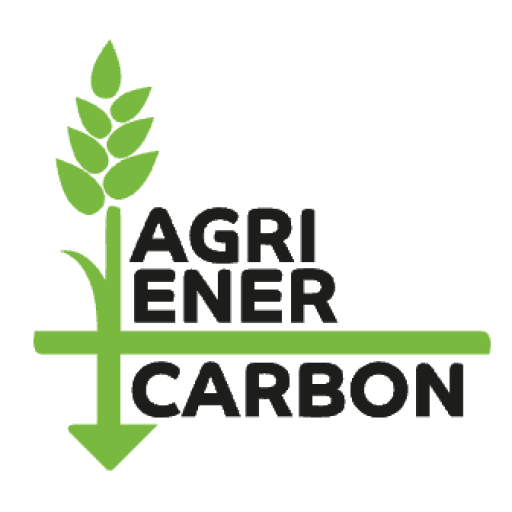Agrienercarbon
Project focus
Agrienercarbon aims to identify a standard for certified calculation of soil carbon storage using a simplified methodology. The fields where testing and sampling will be carried out are from CIB member farms that apply the Biogasfattobene® model and use digestate extensively as an organic fertilizer.
Activities and Goals
To define criteria for evaluating the accumulation of organic matter in soils
based on the agronomic techniques adopted, such as reduced tillage, use of cover crops, double cropping and type of harvesting and residue management, rationalization of organic fertilization based on fertilizer characteristics;
to develop an innovative simplified method for quantifying the evolutionary trend of soil organic carbon content
supported by a fast tool for monitoring organic matter endowment in soils, such as the NIRS technique. To date for the purpose of carbon farming development, the greatest deficiency appears to be knowledge of features of cultivated soils and the processes related to the content of organic matter;
to develop and validate a simplified system to quantify carbon storage in soils
calibrated and tested in partner farms implementing the model defined as “Biogasfattobene”, but which can be the reference model for all farms that will adopt similar agronomic practices and intend to undertake the path of Carbon Farming with related certification to demonstrate their ability to effectively contribute to the storage of carbon in a stable manner in the soil;
to estimate the carbon balance
(or carbon footprint of the product unit) by performing an analysis through LCA methodology of the production cycle of partner farms considering both air emissions and soil carbon dynamics generated by the different agronomic practices adopted;
defining, according to the European guidelines on "carbon farming," the set of data, information and records
related to the farm and the activities it carries out necessary for a prompt, correct and more efficient application of the certification system being defined.
Expected Outcomes
Expected outcomes at the end of the first year:
• updated picture of the state of knowledge on soil organic matter accumulation as a result of specific cultural practices (reduced tillage, organic fertilization, double cropping, crop rotations, residue management);
• updated overview of the carbon footprint certification systems already available and most suitable for application to agricultural production integrated with biogas production;
• definition of the type of information needed and document management methods for prompt and successful application of the “carbon farming” approach;
• completion of on-farm data collection, related to cultivation practices and inputs used, in order to achieve carbon footprint assessment;
• sampling and characterization of partner farms’ soils necessary for the fine-tuning of the simplified method and validation of simulation models;
• sampling and quali-quantitative characterization of crop residues, products and digestates.


The expected results at the end of the second year:
• development of simplified method of measuring soil organic matter content;
• creation of a simplified system for estimating the amount of carbon stored in the soil and beyond: computer product (Excel application) for estimating the effects of combinations of interventions (adoption of alternative and virtuous practices) on carbon balance, leaching and crop yields;
• estimation of the carbon footprint of partner farms, including assessment of the effects of crop operations on soil carbon accumulation.
Output
• 2 technical guidance sheets for evaluation of different combinations of virtuous practices;
• final technical report.
Funding
Agrienercarbon is a project funded by the RDP Lombardy Region 2014-2020 MEASURE 16 – “COOPERATION”
SUBSECTION 16.1 – “Support for the establishment and management of EIP Operational Groups on agricultural productivity and sustainability”
OPERATION 16.1.01 – “EIP Operational Groups”
Duration: 2 years
Partners




Soc. Agr. La Castellana
Soc. Agr. Palazzetto
Soc. Coop. Agr. Pieve Ecoenergia
The partner farms of the project compose the Operational Group. They are 4 cereal-livestock farms located between the provinces of Cremona and Lodi, one in the province of Milan. Altogether, they count on more than 2,300 hectares of cultivated UAA that have been integrating food production with the production of renewable energy from biogas for years by applying the principles of “Biogasfattobene®: the diffusion of double cropping, the dropping of plowing in favor of reduced soil tillage, and the efficient use of digestate as an organic fertilizer in place of chemical fertilizers are the agro-ecological practices that these farms have been practicing for some time, each according to its own peculiarities.
